|
|
Research Progress of Novel Two-dimensional Materials in Photocatalysis and Electrocatalysis
LI Neng,KONG Zhouzhou,CHEN Xingzhu,YANG Yufei
2020 Vol. 35 (7): 735–747
 Abstract
Abstract(
2086 )
 HTML
HTML(
141)
 PDF
PDF(12283KB)(
2478
)
Two-dimensional materials have attracted broad interest because of their wide variety of properties. They can be used as photocatalysts and electrocatalysts due to their extremely high specific surface area, and have great potential application in the field of environment and renewable energy. This review focuses on the structure and properties of common two-dimensional materials such as 2D carbides and nitrides (MXenes), g-C3N4 and black phosphorus (BP). Furthermore, the latest research on the modification of two-dimensional materials in the area of photocatalysis and electrocatalysis are discussed and commented. Finally, research prospects for two-dimensional materials in the future are predicted.
|
|
|
Research Progress of Transition Metal Non-oxide High-entropy Ceramics
CHEN Lei,WANG Kai,SU Wentao,ZHANG Wen,XU Chenguang,WANG Yujin,ZHOU Yu
2020 Vol. 35 (7): 748–758
 Abstract
Abstract(
2340 )
 HTML
HTML(
136)
 PDF
PDF(3074KB)(
3639
)
High-entropy ceramics, a novel class of single-phase ceramic solid solutions consisting of near-equimolar multielement species, are recently attracting tremendous attentions. Especially, the transition metal non-oxide high-entropy ceramics, such as transition metal carbide and boride high-entropy ceramics, have been proposed for potential applications in aerospace, nuclear energy, high-speed machining and many other extreme environments, owing to their excellent physical and chemical properties including super-high hardness, low thermal conductivity, good oxidation resistance and corrosion/erosion resistance. Recently, the research of high-entropy ceramics is only focused on composition design, fabrication methods, single-phase stability and mechanical properties, but the design criterion and theoretical analysis are rarely reported. Based on the researches of high-entropy alloy, the fabrication, characterization and theoretical study of several transition metal non-oxide high-entropy ceramics are summarized, along with some related results of high-entropy film. The prospects for the future developments of high-entropy ceramics are also discussed.
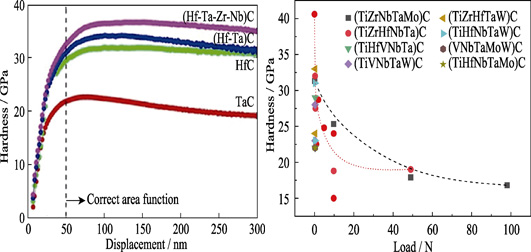
|
|
|
Progress on Hydrothermal Stability of Dental Zirconia Ceramics
ZHANG Xiaoxu,ZHU Dongbin,LIANG Jinsheng
2020 Vol. 35 (7): 759–768
 Abstract
Abstract(
669 )
 HTML
HTML(
14)
 PDF
PDF(4502KB)(
842
)
In recent years, zirconia ceramic, as a preferential choice for teeth restorations, is used as fixed partial dentures and implants due to its excellent mechanical properties, favorable biocompatibility and aesthetic properties, thus significantly shortening the performance life and seriously damaging the reliabilities. However, zirconia ceramic easily occurs low temperature degradation (LTD) of t-m transformation in humid environments. This paper illustrated the characteristics, mechanism and kinetics of LTD, as well as the conventional characterization methods of LTD phenomena and new methods such as optical coherence tomography and focused ion beam. It is also shown the main factors affecting the aging phenomenon, and emphasized the inhibition methods of LTD. By developing materials system and improving processing technology to enhance the strength, fracture toughness of zirconia and to solve the LTD of zirconia, and to meet the needs of people for their health functionalization, zirconia ceramic will be widely applied in the dental restoration field.
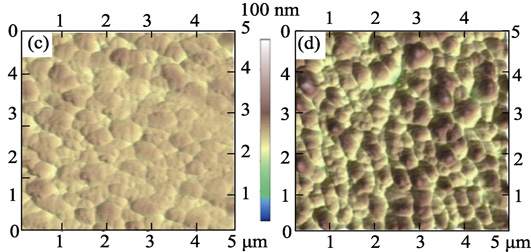
|
|
|
Application of Conductive Metal Organic Frameworks in Supercapacitors
LI Zehui,TAN Meijuan,ZHENG Yuanhao,LUO Yuyang,JING Qiushi,JIANG Jingkun,LI Mingjie
2020 Vol. 35 (7): 769–780
 Abstract
Abstract(
1169 )
 HTML
HTML(
29)
 PDF
PDF(15403KB)(
1363
)
With continuous development of electronics, the requirements for power supply systems are increasing. Supercapacitors (SCs), which have high energy density and excellent power output performance, are ideal power supplies for new generation of miniaturized, intelligent and wearable electronic devices. Thus, developing SCs with fast charge-discharge speed and high stability is a key research topic in the field of energy storage. As the most important part of SCs, electrode materials are critical to its performance. Due to the excellent performances of high-ordered pore structure, large specific surface area, diverse morphologies and dimensions, and adjustable conductivity, conductive metal-organic frameworks (MOFs) materials have shown great potential as promising SCs electrode materials, and have attracted wide attention. This review introduces the structure, conductive mechanism and preparation methods of conductive MOFs following a short introduction of SCs, describes its design strategy as SCs electrode materials, reviews the research progress of conductive MOFs in the field of SCs, and prospects its future application.
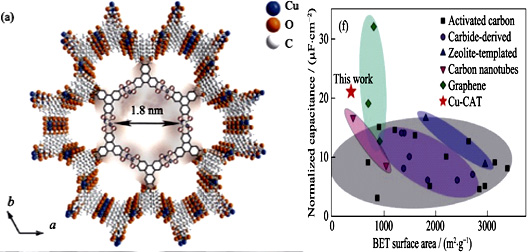
|
|
|
Synergistic Effect of Ag and Ag2O on Photocatalytic H2-evolution Performance of TiO2
WANG Ping,LI Xinyu,SHI Zhanling,LI Haitao
2020 Vol. 35 (7): 781–788
 Abstract
Abstract(
850 )
 HTML
HTML(
47)
 PDF
PDF(2741KB)(
908
)
Highly efficient TiO2 photocatalysts (TiO2/Ag-Ag2O) co-modified by Ag as electron cocatalysts and Ag2O as interfacial catalytic active sites were synthesized via a two-step process including the initial photoinduced deposition of metallic Ag nanoparticles on the TiO2 surface (TiO2/Ag) and the following in situ oxidation of partial Ag into Ag2O by low-temperature calcination. Ag nanoparticles function as effective electron cocatalysts for the steady capture and rapid transportation of photogenerated electrons from TiO2 surface to Ag2O, while the adsorbed H+ ions from solution to Ag2O as the interfacial catalytic active sites are reduced into H2. The synergistic effect of Ag and Ag2O can accelerate the electrons transfer and promote the rapid H2-evolution reaction for enhanced photocatalytic H2-evolution performance of TiO2/Ag-Ag2O. The highest H2-evolution rate of the resultant TiO2/Ag-Ag2O calcinated at 300 ℃ reached 75.20 μmol/h, which was higher than those of the TiO2 (3.59 μmol/h) and TiO2/Ag (41.13 μmol/h) by 21.0 and 1.8 times, respectively. This study provides a new strategy for the design and synthesis of highly efficient photocatalytic H2-evolution materials.
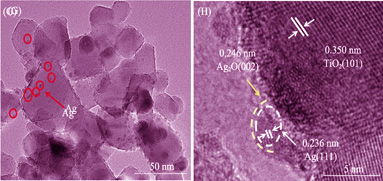
|
|
|
Morphology and Photocatalytic Performance Regulation of Nd3+-doped BiVO4 with Staggered Band Structure
XU Jingwei,LI Zheng,WANG Zepu,YU Han,HE Qi,FU Nian,DING Bangfu,ZHENG Shukai,YAN Xiaobing
2020 Vol. 35 (7): 789–795
 Abstract
Abstract(
785 )
 HTML
HTML(
13)
 PDF
PDF(4583KB)(
936
)
To investigate the modification mechanism of mixed heterogeneous on photocatalysis, a series of Nd3+-doped BiVO4 photo-catalysts with different Nd3+ contents were synthesized through a facile hydrothermal reaction. The samples exhibit Nd3+ content-dependent phase transition from monoclinic to tetragonal phase, as demonstrated by XRD and Raman analyses. SEM images show that the phase transition is accompanied by obvious morphology variation. Less than 1at% Nd3+-doped monocline BiVO4 is composed of irregular particles, while more than 7at% Nd3+ doping results in tetragonal phase BiVO4 of sphere-like or kernel with groove surface. When Nd3+content is in the range of 1at%-7at%, the micron cuboid bars appear in the samples. More importantly, monoclinic and tetragonal phase is concomitant in the product and a heterogeneous junction with staggered band structure is formed. The Rhodamine B degradation efficiencies of all Nd3+-doped samples are higher than those of undoped samples due to the regular morphology after doping. The formed heterogeneous junction inhibits photo-generated electrons and holes recombination of Nd3+-doped BiVO4, inducing 99.4% catalytic efficiency in 4at% Nd3+-doped sample. The novel morphology and the intrinsic mechanism of photocatalysis enhancement upon Nd3+-doped BiVO4 are obtained from the synthesis strategy and the energy band structure.
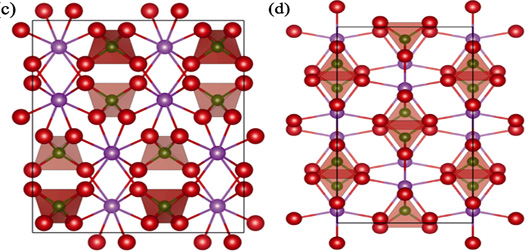
|
|
|
Trace SiO2 Addition on Optical and Scintillation Property of Pr:Lu3Al5O12 Ceramics
HU Zewang,CHEN Xiaopu,LIU Xin,LI Xiaoying,SHI Yun,KOU Huamin,XIE Tengfei,LI Jiang
2020 Vol. 35 (7): 796–802
 Abstract
Abstract(
437 )
 HTML
HTML(
7)
 PDF
PDF(9658KB)(
858
)
Sintering aids are widely used to improve the optical quality of ceramics in the preparation of transparent ceramics. However, sintering aids may deteriorate the luminescent properties of the ceramics. In this work, 0.25at%Pr:LuAG scintillation ceramics were prepared by vacuum pre-sintering combined with hot isostatic pressing. The influences of trace SiO2 sintering aid on the optical and scintillation properties of the ceramics were studied. The results show that a small amount of SiO2 below 200 ppm (1 ppm means that addition content is 1×10-6 g/g) can effectively promote the remove of pore during hot isostatic pressing and improve the optical quality of the Pr:LuAG ceramics. Their in-line transmittance with 150 ppm SiO2 is about 77% at 400 nm. The effects of pre-sintering temperature and holding time on the optical properties of Pr:LuAG ceramics were also investigated. When completely closed pore structure is formed, further increasing the pre-sintering temperature or prolonging the holding time reduce the densification rate in the hot isostatic pressing process, which is not conducive to the remove of pores and lower the optical quality of the Pr:LuAG ceramics. In addition, trace SiO2 addition has less effect on scintillation properties of the Pr:LuAG ceramics. Adding trace SiO2 sintering aid combined with hot isostatic pressing is an effective way to prepare Pr doped garnet scintillation ceramics.
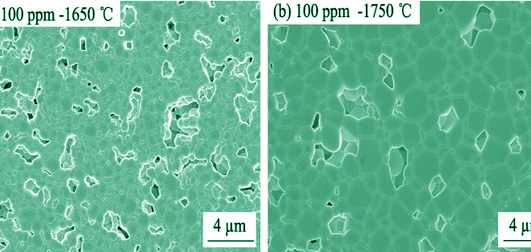
|
|
|
Adsorption-enrichment and Localized-photodegradation of Bentonite-supported Red Phosphorus Composites
ZHU Enquan,MA Yuhua,AINIWA· Munire,SU Zhi
2020 Vol. 35 (7): 803–808
 Abstract
Abstract(
591 )
 HTML
HTML(
16)
 PDF
PDF(951KB)(
710
)
The hydrothermally treated red phosphorus (HRP) was dispersed on exfoliated bentonite (EB) supporter to prepare the EB/HRP photocatalyst for improving photocatalytic performance. The as-synthesized samples were characterized by different methods. Rhodamine B was selected as the model pollutant to evaluate the photodegradation property of EB/HRP. Results showed that the photodegradation efficiency of the EB/HRP photocatalyst composite increased with increased EB mass fraction, and decreased after reaching the highest value. When the mass fraction of EB was 9%, the EB9/HRP photocatalyst composite exhibited the maximum adsorption performance and photodegradation activity. Its degradation rate constant k was 0.0641 min-1, which was two times that of HRP. In addition, after five cycles of photodegradation experiments, EB9/HRP still had high photocatalytic activity (96.8%). Therefore, the EB9/HRP catalyst composite had good photocatalytic activity and stability, which can be an efficient and stable photocatalyst for the degradation of pollutants.
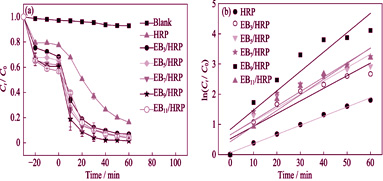
|
|
|
RuFe Nanoparticles Modified Sheet-like BiVO4 : High-efficient Synergistic Catalyst for Ammonia Borane Hydrolytic Dehydrogenation
ZHANG Yiqing,ZHANG Shujuan,WAN Zhengrui,MO Han,WANG Niangui,ZHOU Liqun
2020 Vol. 35 (7): 809–816
 Abstract
Abstract(
506 )
 HTML
HTML(
20)
 PDF
PDF(4773KB)(
816
)
Developing highly efficient and low-cost catalysts is crucial in the field of clean energy economy, in which ammonia borane (AB) has attracted great attention due to its high hydrogen production through the catalytic hydrolysis. In this work, BiVO4 nanosheet was firstly synthesized by a facile reflux method. And then bimetallic RuFe@BiVO4 catalysts with different molar ratios of Ru/Fe were prepared via in situ impregnation-reduction techniques and their catalytic activities were also tested in the hydrogen generation from aqueous solution of AB at room temperature. Compared with the releasing hydrogen rates of catalysts of BiVO4, Ru@BiVO4, Fe@BiVO4, RuFe NPs and RuFe@BiVO4, respectively, Ru1Fe0.1@BiVO4 exhibits the highest catalytic activity for the dehydrogenation of AB among all catalysts, the activation energy (Ea) and turnover frequency (TOF) are 43.7 kJ·mol-1 and 205.4 molH2·molRu·min-1, respectively. The addition of non-noble Fe can significantly enhance the catalytic activity of Ru counterparts, which is closely related to the strong electronic effect between Ru and Fe NPs, bi-functional effect generated between the RuFe NPs and the support BiVO4.
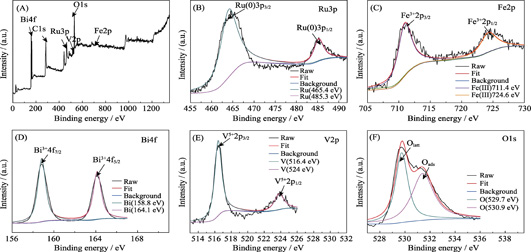
|
|
|
Creep Properties and Damage Mechanisms of 2D-SiCf/SiC Composites Prepared by CVI
WANG Xi,WANG Kejie,BAI Hui,SONG Zhuolin,WANG Bo,ZHANG Chengyu
2020 Vol. 35 (7): 817–821
 Abstract
Abstract(
691 )
 HTML
HTML(
11)
 PDF
PDF(1399KB)(
878
)
The creep properties of 2D-SiCf/SiC composites prepared by chemical vapor infiltration were studied. The creep temperatures were 1200, 1300 and 1400 ℃, and the stress levels ranged from 100 MPa to 140 MPa. Scanning electron microscope was used to observe the fracture morphology, and their microstructure was analyzed by high resolution transmission electron microscope. The results show that the creep damage modes of 2D-SiCf/SiC composites mainly include the generation of matrix crack, interfacial debonding and fiber creep. The creep of bridging fibers leads to increase of the opening distance of the matrix cracks and further creep rupture of the composite. The microstructural stability of the SiC fiber plays a critical role in the creep properties of 2D-SiCf/SiC composites. SiC grains in the fibers of 2D-SiCf/SiC composites do not grow when it is crept at 1200 ℃/100 MPa. However, the grains grow significantly when the creep temperature increases to 1400 ℃. The creep rupture time decreases to 8.6 h from above 200 h, and the steady-state creep rate increases by three orders of magnitude.
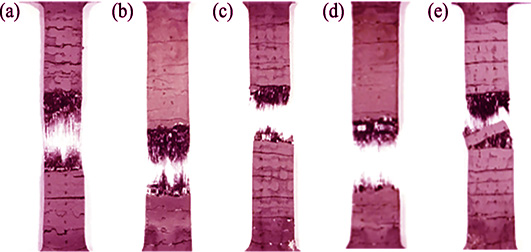
|
|
|
Reaction Synthesizes of ZrN and Phase Diagram in the Si3N4-ZrO2-La2O3 System
LI Yanrui,LU Youjun,LIU Yang,YUAN Zhenxia,HUANG Zhenkun
2020 Vol. 35 (7): 822–826
 Abstract
Abstract(
535 )
 HTML
HTML(
7)
 PDF
PDF(575KB)(
563
)
Si3N4-ZrO2-La2O3 ternary system were prepared via solid-state reaction at 1500 ℃ for 1 h with N2 protection, yielding coexistence phase of ZrN and lanthanum-based compounds, such as La4.67Si3O13, La5Si3NO12, La4Si2N2O7, LaSiNO2, and La2Zr2O7. Since the generated ZrN and lanthanum-based compounds are not located on the triangle plane of Si3N4-ZrO2-La2O3 system, it is necessary to add SiO2 to extend the ternary into quinary system of Si3N4-SiO2-La2O3-ZrO2-ZrN. After the phase diagram of this quinary system is confirmed and presented, the phase diagram of La2O3-SiO2-ZrO2 ternary subsystem at 1570 ℃ is further proposed for the first time. In addition, La2O3 in the Si3N4-ZrO2-La2O3 ternary system can help to simulate the substitution reaction between Si3N4 and ZrO2 to produce ZrN.
|
|
|
Bi2Mn4O10: Preparation by Polyacrylamide Gel Method and Electrochemical Performance
ZHAN Jing,XU Changfan,LONG Yiyu,LI Qihou
2020 Vol. 35 (7): 827–833
 Abstract
Abstract(
642 )
 HTML
HTML(
18)
 PDF
PDF(2292KB)(
849
)
Due to competitive theoretical capacity, Bi2Mn4O10 has been deemed as an efficient Li-ion battery anode material. Bi2Mn4O10 powder was prepared by polyacrylamide gel method using bismuth nitrate and manganese acetate as raw materials. The effects of preparation conditions on the phase, morphology and electrochemical cycling performance of powder were investigated. Results showed that the spheroid Bi2Mn4O10 powder with narrow size distribution was successfully prepared under the conditions of molar ratio of acrylamide to total metal ions of 8 : 1, the glucose concentrations of 1.11 mol/L and heat treatment temperature of 873 K. Lithium ion batteries with as-prepared Bi2Mn4O10 as anode material, acquired excellent cycle and rate performances. Its discharge specific capacity is 496.8 mAh/g at 0.2C (1C=800 mA/g) rate after 50 cycles, corresponding to a high capacity of 76.9%. Even at 3C rate, a superior rate capacity of 232 mAh/g is retained.
|
|
|
Flux Growth of Tungsten Oxychloride Li23CuW10O40Cl5
LI Shufang, ZHAO Shuang, LI Manrong
2020 Vol. 35 (7): 834–838
 Abstract
Abstract(
468 )
 HTML
HTML(
16)
 PDF
PDF(4292KB)(
753
)
Mixed anion compounds can generate the emergence of novel properties that differ from those with mono-type anion due to the difference of electronegativities, ionic radii, polarizabilities, and oxidation states between unlike anions. Abundant research has been conducted on metallic mixed-anion materials with potential application in electronics, detectors of moisture, gas sensors, electrodes for solar batteries, etc. The flux method has been widely applied for mixed-anion crystal growth, which based on metathetical reaction with appropriate metal-salts ?ux under mild conditions. It is meaningful to synthesize the mixed anion compounds by the flux method. Single crystals of tungsten oxychloride Li23CuW10O40Cl5 were prepared via CuCl2 flux-growth method by two steps, which using high quality and phase-pure polycrystalline Li4WO5 as precursor. The crystal structure was determined by single-crystal X-ray diffraction analysis, which indicates that Li23CuW10O40Cl5 crystallizes in P63/mcm space group (a= 1.02846(3) nm, c=1.98768(9) nm, V=1.82076(11) nm 3, and Z=2). There are crystallographically independent five Li, two W, one Cu, two Cl, and five O atoms in the unit cell, where W(1) atoms are coordinated with one Cl and five O atoms in a distorted octahedra geometry, while W(2) atoms are connected with four O atoms in a tetrahedral coordination. The Cu atoms are connected with six O atoms forming [CuO6] octahedra. Thus, the crystal structure of the titled compound consists of [CuO6] and [W(1)O5Cl] octahedra, and [W(2)O4] tetrahedra. The successful synthesis of tungsten oxychloride Li23CuW10O40Cl5 through flux-growth method is meaningful for explore new mixed anion compounds in future.
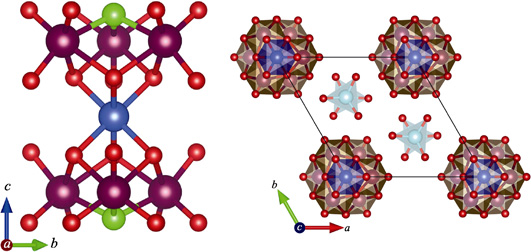
|
|
|
Fabrication of Z-scheme BiVO4/GO/g-C3N4 Photocatalyst with Efficient Visble-light Photocatalytic Performance
XU Shichao,ZHU Tianzhe,QIAO Yang,BAI Xuejian,TANG Nan,ZHENG Chunming
2020 Vol. 35 (7): 839–846
 Abstract
Abstract(
710 )
 HTML
HTML(
61)
 PDF
PDF(1017KB)(
1121
)
Fabricating Z-scheme photocatalysts is a promising method for improving photocatalytic activity by effectively enhancing charge separation. A new Z-scheme BiVO4/GO/g-C3N4 photocatalyst was prepared by two steps of impregnation-calcination and hydrothermal method, and then characterized by different methods. In the photocatalytic process of BiVO4/GO/g-C3N4, GO nanosheet act as fast transmission channels between BiVO4 and g-C3N4 and can suppress electron-hole recombination, which significantly promotes the charge separation and improves the redox ability of the ternary heterojunction. The ternary photocatalyst has good photocatalytic degradation of Rhodamine B (RhB) as compared to the single-component or binary composite. It is capable of degrading 85% of RhB in 120 min under visible light irradiation and the hole (h+) plays a major role in the reaction. This work provides a simple preparation method for a ternary photocatalyst system in which g-C3N4 coupled with BiVO4 by GO to significantly improve photocatalytic activity.
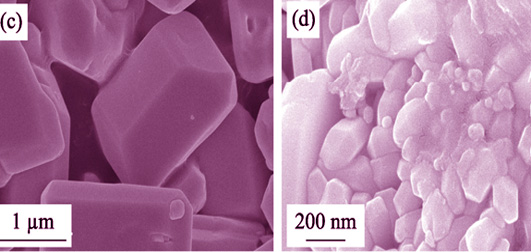
|
|